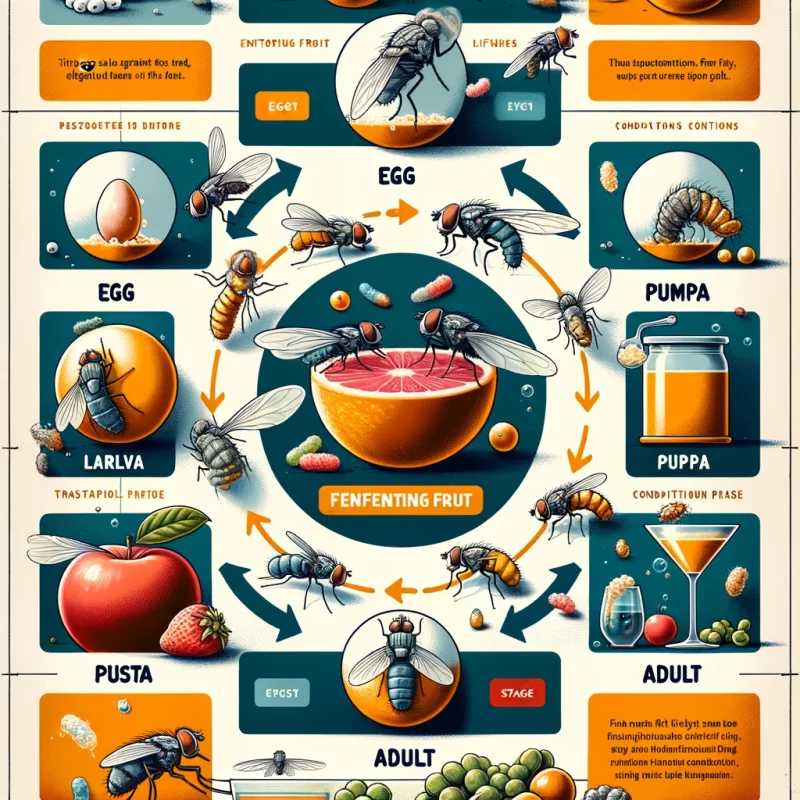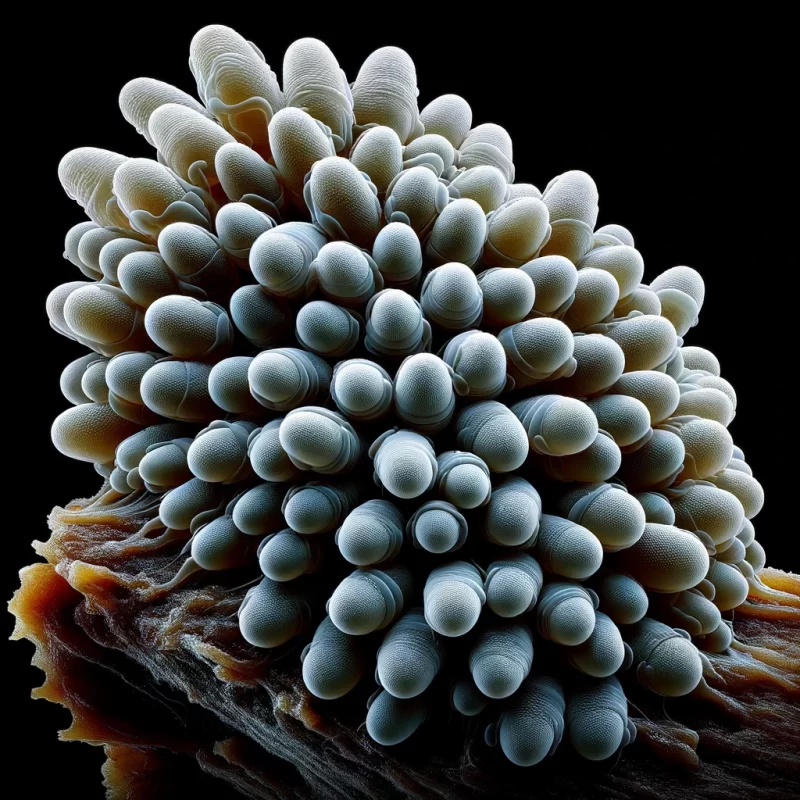Fruit Fly Facts
Where Do Fruit Flies Lay Eggs?
Fruit flies, those persistent little insects with red eyes, have a notorious reputation for invading kitchens and turning fresh produce into breeding grounds. Understanding where fruit flies lay their eggs can illuminate much about their lifecycle and habits, crucial for anyone looking to comprehend the full scope of a fruit fly infestation.

The Lifecycle of Fruit Flies
To start, it’s essential to grasp the lifecycle of fruit flies. These insects can transform from eggs to adult fruit flies in about a week under optimal conditions. Female fruit flies are prolific breeders, laying several batches of eggs on fermenting or rotting fruits and vegetables. These eggs quickly hatch into maggots, which then feast on the decaying matter before emerging as adults ready to continue the cycle.
Preferred Egg-Laying Sites
Fruit flies are not indiscriminate where they lay eggs. They are attracted to certain conditions and materials:
- Fermenting and Rotting Fruit: The quintessential egg-laying site for fruit flies is on fermenting fruits and vegetables. Fruit flies lay eggs on these food sources because they offer abundant nourishment for the emerging larvae. Rotting fruits on the kitchen counter, over-ripen bananas, and fresh produce left out for too long are prime real estate for fruit flies.
- Garbage Disposals and Drains: These areas accumulate food scraps and decaying matter, providing an excellent environment for fruit fly eggs. Garbage disposals and kitchen sink drains can support fruit fly populations, making them a problem year-round, not just in the summer months.
- Empty Bottles and Cans: Residues in empty bottles and cans, especially those that contained sweet or fermenting foods, can attract fruit flies. They can lay eggs in the residue, turning recycling bins into unexpected incubators.
- Cleaning Rags and Mops: Moist cleaning rags and mops that have been used and not properly dried can also serve as a site for fruit flies to lay eggs, especially if they’ve been used to clean up food spills.
The Process of Egg-Laying
Female fruit flies, particularly the female spotted wing drosophila, a type known for its preference for fresher produce, can lay hundreds of eggs in their lifetime. These eggs are tiny, laid in the soft, decaying flesh of fruits and vegetables where they are almost invisible to the naked eye. The process is quick, with eggs hatching into larvae, commonly referred to as maggots, in just five to six days.
What Do Fruit Fly Eggs Look Like?

Fruit fly eggs are minute, often measuring just about 0.5 millimeters in length, making them challenging to spot with the naked eye. They are elongated and somewhat oval in shape, with a whitish or translucent color that allows them to blend seamlessly into the environment where they are laid, typically on the surface of fermenting or rotting fruits and vegetables. Due to their diminutive size and color, fruit fly eggs can easily be overlooked, yet a keen observer might notice them as tiny specks clustered in the moist, decaying crevices of produce or organic material, heralding the onset of a new generation of fruit flies.
Attraction Factors
What attracts fruit flies to potential egg-laying sites? The answer lies in the scent of fermentation and decay, a virtual siren song for fruit flies. Rotting fruits, fermenting vegetables, and other organic materials in the process of decomposition emit odors that fruit flies find irresistible.
Insights into Fruit Fly Habits
Understanding where fruit flies lay eggs offers insight into their behavior. For instance, fruit flies live in close proximity to their food sources, not venturing far from where they lay eggs. This behavior underscores the importance of managing waste and storing fruits and vegetables properly to reduce the chances of infestation.
Fruit flies can be a problem year-round, but they are most active during the summer months when conditions are optimal for rapid lifecycle progression. However, indoor environments can provide a haven for fruit flies even outside of these peak periods.
Observation and Control
Observing fruit fly behavior can be fascinating. For example, setting up a simple fly trap with apple cider vinegar, dish soap, and plastic wrap with a few holes can catch fruit flies. This method leverages their attraction to the scent of cider vinegar—mimicking the fermenting fruits they seek for egg-laying—while the dish soap breaks the surface tension, trapping them. The simplicity and effectiveness of this fruit fly trap highlight a practical approach to managing these pests.
Fruit flies do not bite humans but are considered pests due to their potential to contaminate food with bacteria as they lay eggs. While they’re a nuisance, understanding their lifecycle and behaviors, including their egg-laying habits, can provide valuable insights into effectively managing their populations without necessarily going into prevention tactics.
Conclusion
In conclusion, fruit flies’ preference for laying eggs in fermenting or rotting fruit and other organic materials is a survival strategy that has enabled them to thrive in close quarters with humans. By laying eggs in these environments, fruit flies ensure that their offspring have immediate access to food upon hatching, thereby continuing the cycle of life. Understanding these behaviors not only sheds light on the fruit fly infestation problem but also on the intricate relationships between pests and their environments. Whether you’re dealing with a full-blown infestation or just curious about these ubiquitous insects, the knowledge of where fruit flies lay their eggs is fundamental to comprehending their place in the natural world.

Hi there! I’m Beliz Güner, and welcome to my world of innovative solutions for fruit fly challenges. Though I hail from Turkey and have a background in interior design, my true passion lies in tackling the persistent issue of fruit flies. My journey has been anything but ordinary, as I’ve transitioned from creating beautiful spaces to devising effective fruit fly traps.
My interest in DIY home projects and product reviews has fueled my desire to share knowledge and personal experiences with others facing similar frustrations. Through my blog, I aim to empower you with the tools and insights needed to combat fruit fly invasions, drawing on my unique blend of design creativity and hands-on experimentation. Join me as we explore the most effective strategies to reclaim our homes from these unwelcome guests.

